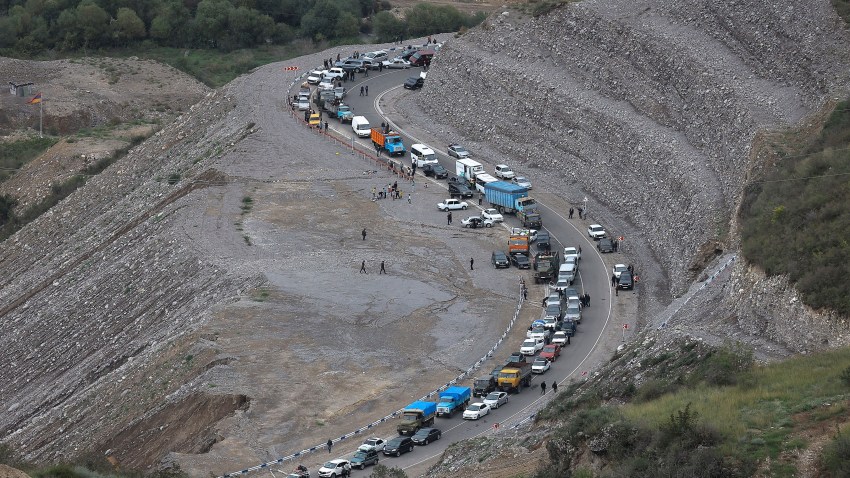A massive refugee crisis with enormous humanitarian consequences is presently unfolding before the world’s eyes. Sadly, that could refer to any number of current events, whether migrants crossing the Mediterranean to Europe, asylum-seekers at the U.S.-Mexico border, or civilians displaced by war and conflict in Ukraine and the Democratic Republic of Congo. But in this case, I am referring to the more than 100,000 ethnic Armenians—nearly the entire population of the Nagorno-Karabakh region—that have fled their homes since Azerbaijan seized control of the territory in a lightning military advance on Sept. 19, an exodus many observers have called an “ethnic cleansing.”
But this is only one crisis that unfolded in the past week. Serbia also amassed troops on its border with Kosovo, ostensibly in response to skirmishes between Kosovo police and Serbian paramilitaries that left one police officer and three armed Serbs dead. While it seems, at least for now, that some of those troops were drawn down, the possibility of another flareup, this one resulting in war, remains high.
We already hear a lot about the global economic crises caused by Russia’s all-out invasion of Ukraine. From grain shortages to higher oil prices, the economic consequences of what remains a localized conflict are being felt everywhere. These impacts are a major reason why analysts believe that support for Ukraine’s war effort could eventually flag among Western publics, leading to pressure on Kyiv to negotiate a settlement with Moscow, even at the cost of ceding territory.

